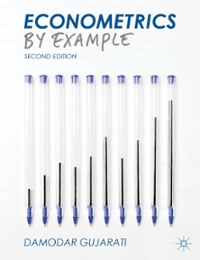Answered step by step
Verified Expert Solution
Question
1 Approved Answer
QUESTION 1 Which of the following statements is TRUE ? The foreign exchange market is free of government intervention The difference between covered and uncovered
QUESTION 1
- Which of the following statements isTRUE?
- The foreign exchange market is free of government intervention
- The difference between covered and uncovered interest rate parity is that the former uses the forward rate to "cover" for the expected exchange rate
- Basic premise is that unhedged returns from investing in different currencies should be the same, regardless of their interest rates
- Central banks engage in international financial transactions called overnight repo operations in order to influence exchange rates
1 points
QUESTION 2
- How does the Federal Reserve (FED) use open market operations to conduct monetary policy?
- Raising or cutting the overnight repo rate
- Raising or cutting interest rates
- Buying and selling govt securities in the open market
- Raising or cutting the discount rate
1 points
QUESTION 3
- Which of the following statements isTRUE?
- At lower interest rates, investment is lower, therefore less output (IS)
- The IS curve shows the different combinations of interest rates and savings at which total investment equals total savings
- Intersection of Investment Savings (IS) & Liquidity Preference / Money Supply (LM) curve shows the equilibrium point of interest rates and output where money market and the real economy are in balance
- Lower levels of income (GDP) induce increased demand to hold money balances for transactions, which require a higher int to keep money supply & demand in equilibrium
1 points
QUESTION 4
- An unsterilized intervention in which domestic currency is sold to purchase foreign assets leads to __________
- a gain in international reserves, an increase in the money supply, and a depreciation of the domestic currency
- a loss in international reserves, an increase in the money supply, and a depreciation of the domestic currency
- a gain in international reserves, a decline in the money supply, and a depreciation of the domestic currency
- a loss in international reserves, an increase in the money supply, and an appreciation of the domestic currency
1 points
QUESTION 5
- Which of the following statements isTRUE?
- To overcome a liquidity trap, the government can implement deficit spending policy to jumpstart demand
- Keynesians suggest contractionary fiscal policy is the conventional measure to overcome a liquidity trap
- Keynesians suggest contractionary monetary policy is the conventional measure to overcome a liquidity trap
- Monetarists suggest expansionary monetary policy is the conventional measure to overcome a liquidity trap
1 points
QUESTION 6
- What is a central bank trying to achieve when implementing monetary policy via raising or lowering interest rates?
- Manipulate demand and supply
- Control non-performing loans
- Price stability and steady inflation rate
- Interest rate stability
1 points
QUESTION 7
- Fiscal policy can be implemented more quickly than monetary policy. True or False?
- True
- False
1 points
QUESTION 8
- If a central bank intervenes in the foreign exchange market, it gives up some control over its money supply and ______
- the purchase of foreign assets results in a decrease in the currency worldwide
- the sale of foreign assets results in an increase in the currency worldwide
- the sale of foreign assets results in a decrease in the currency worldwide
- no change in the currency value as stated under covered interest parity condition
1 points
QUESTION 9
- Which of the following statements isTRUE?
- When there is deflation, consumers and investors delay spending and investing because they think they can do so at lower prices in the future
- When there is deflation, the central bank will raise interest rates to econurage consumers and investros to spend more as interst rates might go higher
- When there is deflation, consumers and investors increase spending and investing because they think they can do so at lower prices in the future
- When there is deflation, consumers and investors delay spending and investing because of the liquidity trap
1 points
QUESTION 10
- Which of the following is a suitable nominal anchor for monetary policy?
- Real interest rates
- Nominal GDP
- Core inflation
- Exchange rate
Step by Step Solution
There are 3 Steps involved in it
Step: 1

Get Instant Access to Expert-Tailored Solutions
See step-by-step solutions with expert insights and AI powered tools for academic success
Step: 2

Step: 3

Ace Your Homework with AI
Get the answers you need in no time with our AI-driven, step-by-step assistance
Get Started


